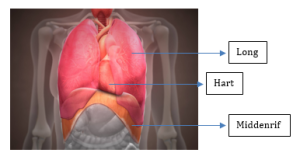What is diaphragmatic paralysis
Diaphragm
The diaphragm (medical name: diaphragm) is the main respiratory muscle in the human body. It is the muscle that separates the abdominal cavity from the thoracic cavity. Despite being one large muscle, it is referred to as the left and right diaphragm since both sides are independently controlled by a diaphragm nerve.
A dysfunction in the diaphragm significantly affects breathing. Most dysfunctions can be corrected surgically, but accurate diagnosis and treatment require thorough knowledge of the diaphragm’s structure and function.

Diaphragmatic paralysis
Diaphragmatic paralysis causes the diaphragm to rise, potentially compressing one or both lungs and sometimes the heart. This can cause severe shortness of breath.
The paralysis can have various causes, such as complications from another surgery damaging the nerve to the diaphragm, but in almost half of the patients, the cause is unknown.
Diaphragm Center
Dr. Welvaart founded the former Diaphragm Expertise Center in 2010, initially treating patients with a paralyzed diaphragm at Rivierenland Hospital in Tiel and then at Meander Medical Center in Amersfoort. In April 2022, the Diaphragm Center became an independent center, separate from the Meander Medical Center.
Diaphragm Center
For treatment of paralyzed diaphragm


